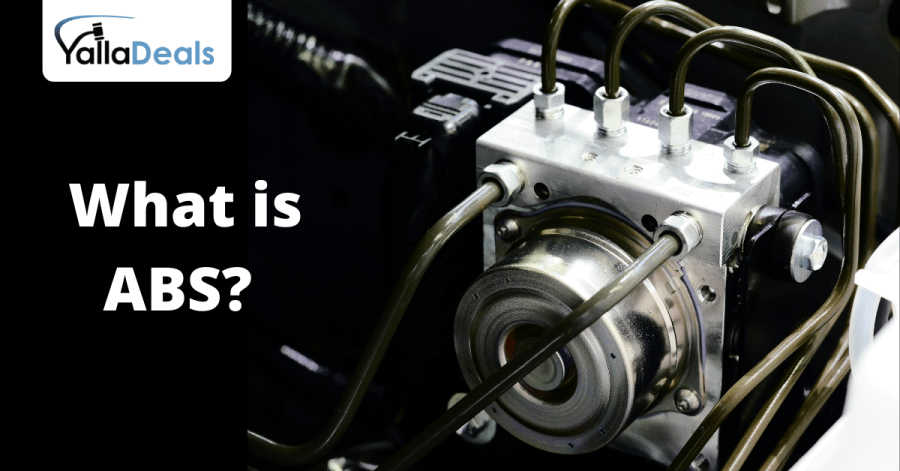

جميع الحقوق محفوظة. يلا ديلز © 2023

No, we're not referring to your dream washboard abs (abdominal muscles). We're referring to that peculiar three-lettered acronym found in almost all modern vehicles. ABS–what is it?
ABS in modern vehicles stands for "Anti-lock Braking System." It's designed to prevent you from locking up your brakes under hard braking. The ABS is crucial because your braking distance could be longer without it, and you may lose control of your car in dangerous braking situations.
According to Nissan, the ABS detects the rotation speed at each wheel and varies the brake fluid pressure to prevent each wheel from locking and sliding. By preventing each wheel from locking, the system helps you maintain steering control and minimizes swerving and spinning on slippery surfaces. Each time you start the engine and move your car at a low speed, the computer tests the system with its built-in diagnostic feature.
How to Use Your ABS
Here are some guidelines from Nissan on properly using ABS:
- Depress the brake pedal and hold it down.
- Depress the brake pedal with firm, steady pressure, but don't pump the brakes. The ABS will operate to prevent the wheels from locking up.
- Steer the vehicle to avoid obstacles.
- Don't pump the brake pedal. Doing so may result in increased stopping distances.
Pumping the brake pedal is the same term as "Cadence or Stutter Braking," a "driving technique that involves pumping the brake pedal and is used to allow a car to both steer and brake on a slippery surface. It's usually utilized to induce an emergency stop where traction is limited to decrease the impact of skidding from road wheels locking up under braking. For most drivers of modern cars, it has been entirely superseded by ABS. However, it is still a valuable skill for drivers of non-ABS equipped vehicles such as classic cars."*
I remember the first time I felt the ABS in my car kicking into action. Several years ago, I was driving on a highway at about 110 km/hr when the vehicle in front of me stopped abruptly. At first, I slammed the brakes and instantly felt a strange, pulsating sensation, as if the brakes weren't operating properly. I was petrified and started pumping the brakes instead. I ended up swerving off the lane, which technically avoided a collision, but I now realize my reaction was incorrect. This is what Nissan meant: Avoid pumping the brakes because your stopping distance may increase. Instead, you should depress with firm, steady pressure.
Self-test Feature Found in Most Cars
Nissan explains that the ABS includes electronic sensors, electric pumps, hydraulic solenoids, and a computer. The computer has a built-in diagnostic feature that tests the system each time you start the engine and move the vehicle at a low speed in forward or reverse. When the self-test occurs, you may hear a "clunk" noise and/or feel a pulsation in the brake pedal. This is normal and doesn't mean there's a malfunction.
If the computer senses a malfunction, it deactivates ABS and illuminates the ABS warning light on the instrument panel. The brake system then usually operates but without anti-lock assistance. You can read our article on the meaning of various warning lights on your dashboard here.
If the ABS warning light illuminates during the self-test or while driving, have the vehicle checked by a dealer or mechanic.
Normal Operation
The ABS operates at speeds above 5 - 10 km/h (may vary according to the manufacturer), and the speed varies according to road conditions. When the ABS senses that one or more wheels are close to locking up, the actuator rapidly applies and releases hydraulic pressure. This action is similar to pumping the brakes fast.
You may feel a pulsation in the brake pedal and hear a noise from under the hood or feel a vibration from the actuator when it's working. This is expected and implies the ABS is functioning correctly. However, the pulsation may indicate that road conditions are hazardous and extra care is needed while driving.
Now that you know what ABS is and how to use it, you can go back to working your rock solid (hopefully not flabby) abs. There's no better feeling than knowing how your ABS works while driving home after working your abs in the gym - no pun intended.
Nissan Tips Source: Nissan Owner's Manual. This blog post is meant to be a general guide. For more information on your specific vehicle manufacturer and features, please refer to your vehicle's manual.
* Wikipedia: https://en.wikipedia.org/wiki/Cadence_braking
Disclaimer: This article does not construe any affiliation with Nissan or Arabian Automobiles.